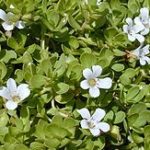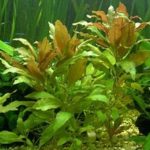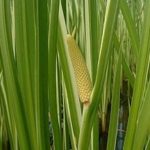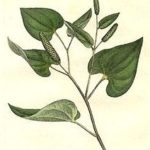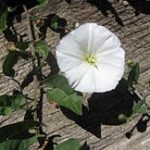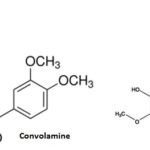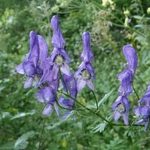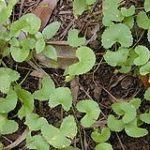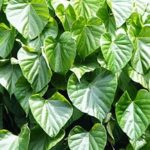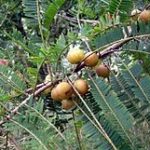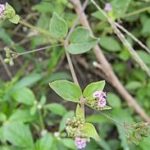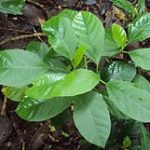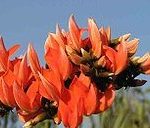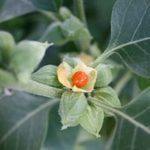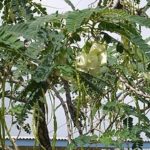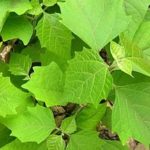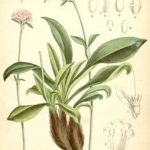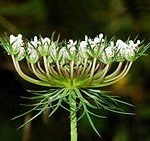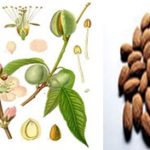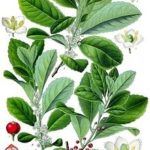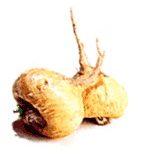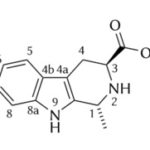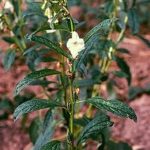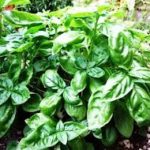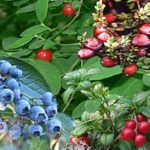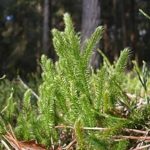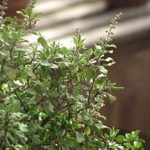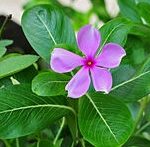INDIAN HERBAL MEDICINES USED FOR TREATMENT OF DEMENTIA: AN OVERVIEW
HTML Full TextINDIAN HERBAL MEDICINES USED FOR TREATMENT OF DEMENTIA: AN OVERVIEW
Chandraprakash Dwivedi, Kunal Chandrakar *, Vijay Singh, Sandip Prasad Tiwari, Trilochan Satapathy, Shurbhi Kesharwani, Birendra Kumar and Amit Roy
Columbia Institute of Pharmacy, Tekari, Near Vidhansabha Raipur - 493111, Chhattisgarh, India.
ABSTRACT: Dementia is a progressive neurological disease of the brain. It demolishes the vital brain cells, causing trouble with memory, thinking, and behavior, brutal enough to affect work, lifelong hobbies, and social life. Recognized factors in dementia include acetylcholine deficiency, free radicals, and inflammation of the brain tissue. Since, the drugs and natural remedies have been prescribed to enhance the memory and protect the memory functioning in dementia people. The traditional herbal medicine, numerous plants have been used to treat age-related cognitive disorders. The use of herbs to treat ailments would later form a large part of Ayurveda. In the first millennium BCE, there emerges in post-Vedic India the traditional medicine system known as Ayurveda, meaning the "complete knowledge for long life". According to the compendium of Charaka, the Charakasamhita health and disease are not predetermined and life may be prolonged by human effort. The compendium of Suśruta, they defines the purpose of medicine to cure the diseases of the sick, protect the healthy, and to prolong life. Most remarkable is Sushruta's penchant for scientific classification His medical treatise consists of 184 chapters, 1,120 conditions are listed, including injuries and illnesses relating to ageing and mental illness. Dementia is a progressive neurological disease of the brain. It demolishes the vital brain cells, causing trouble with memory, thinking, and behavior, brutal enough to affect work, lifelong hobbies, and social life. Recognized factors in dementia include acetylcholine deficiency, free radicals, and inflammation of the brain tissue, It is syndrome or set of symptoms and signs occur at the same time is due to a disease in the brain. It is progressive impairment of memory, thinking, and orientation, learning capacity, language and judgments. Dementia occur due to the cerebral ischemia, energy failure, and calcium overload, glutamate-mediated excitotoxicity, oxidative stress and structural and functional changes.
| Keywords: |
Herbs, Dementia, Neurological, Acetylcholinesterase, cerebral ischemia
INTRODUCTION: Dementia is a term that describes the loss of cognitive function, usually because of damaged brain cells as it includes memory loss and at least one of the following, difficulty with language, impaired movement, and inability to plan and initiate appropriate behaviors socially or at work 1. Dementia is a progressive neurological disease of the brain.
It demolishes the vital brain cells, causing trouble with memory, thinking, and behavior, brutal enough to affect work, lifelong hobbies, and social life.
Since, the drugs and natural remedies have been prescribed to enhance the memory and protect the memory functioning in dementia people. The traditional herbal medicine, numerous plants have been used to treat age-related cognitive disorders, which are today popular all over the world due to their proven effective qualities. The drugs acting on the brain are called as nootropic drugs. The natural memory enhancing drugs controlled the activity of acetylcholinesterase (AChE). AChE modulates acetylcholine (ACh) to proper levels by degradation accordingly excessive AChE activity produce to constant Ach deficiency leads to memory and cognitive impairments. This natural agent inhibits excessive AChE activity and protects the people who have dementia.
The Indian medicinal plants are the most prolific sources for treatment of dementia. This review focuses on natural Indian medicinal plants used for treating and curing dementia. Herbal therapy may provide an alternative to treating some psychiatric conditions. According to the American Psychiatric Association, approximately 10-25% of women and 5-12% of men will suffer from depression at some point in their lives.2More than humans are suffering from brain disorders including dementia.2 It is a syndrome or set of symptoms and signs occur at the same time is due to a disease in the brain. It is progressive impairment of memory, thinking, and orientation, learning capacity, language, and judgments.
Dementia occurs due to cerebral ischemia, energy failure, calcium overload, glutamate-mediated excitotoxicity, oxidative stress, and structural and functional changes. 3 Plants have a more important value in human life since the ancient times, and for the Indians, plants are more valuable than all world. Plants are used since ancient times for food, stick as well as medicine. Plants help to save and maintain the healthy life, and that’s region plant may be as god worship.
Plants have been a source of medicine and a major resource for health care since ancient times, with some traditional herbal medicines in use for more than 5,000 years 4. The history of medicine in India can be traced to the remote past. The earliest mention of the medicinal use of plants is found in the Rigveda, probably the oldest repositories of human knowledge written between 4500 and 1600 B.C. The Atharvaveda also contain prescriptions of herbs for various ailments. The use of herbs to treat ailments would later form a large part of Ayurveda.
In the first millennium BCE, there emerges in post-Vedic India the traditional medicine system known as Ayurveda, meaning the "complete knowledge for long life" 5. According to the compendium of Charaka, the Charakasamhita, health, and disease are not predetermined, and life may be prolonged by human effort. The compendium of Susruta, the Susrutasamhita defines the purpose of medicine to cure the diseases of the sick, protect the health, and to prolong life. Most remarkable is Sushruta's penchant for scientific classification: His medical treatise consists of 184 chapters, 1,120 conditions are listed, including injuries and illnesses relating to aging and mental illness 6.
What is dementia? Dementia is a descriptive term derived from the Latin, originally meaning “madness” from “root de men’s” (meaning de – ‘without’ + ment, the root of men's “mind”) indicating on observable decline in mental abilities 7. It is chronic and progressive syndrome characterized by decline in mental functioning in which memory thinking, judgment, and ability to concentrate are impaired. There also may be a change in personality. In commonly dementia develop more in women than the men, Dementia isn't an acute condition that suddenly appears, and it usually does not require emergency treatment, but it can develop suddenly when a severe injury, disease or toxin destroys brain cells, or it can develop slowly, especially in senior citizens.8
Signs and Symptoms:
- Reduces the ability to learn.
- Loss of reason, retain, or recall of experience.
- Loss of patterns of thoughts, feelings, and activities.
- Additional mental and behavioral problems.
- Behavior may be disorganized, restless or inappropriate.
- Some people become restless or wonder about by day and sometimes at night.
- There may be a sudden change to tears or anger (‘’a catastrophic reaction’’).
- Suffers to deny that relatives, even relatives in their immediate family, are their relatives.
- Depression affects 20-30% of people who have dementia, about 20% have anxiety.
- Cognitive dysfunction of shorter duration is called “delirium.”
- Especially in the later stage of the condition, subjects may be disoriented in time (not knowing the day, week, or even year) in place (not knowing where they are), and in person (not knowing who they and others around them are). 9
Classification of Dementia: Dementia is yet not classified in a specific manner, and different-different scientist & researchers classified in different – different types that are 10.
FIG. 1: CLASSIFIED IN DIFFERENT TYPES DEMENTIA
Indian Herbal Medicines Best Choice Of Dementia Disease:
Bacopa monnieri:
Synonyms: Indian Pennywort, Gratiola monnieria, Bacopa monnieri, water hyssop, Brahmi, thyme-leafed gratiola.
Scientific Classification:
| Kingdom: | Plantae |
| Order: | Lamiales |
| Family: | Plantaginaceae |
| Genus: | Bacopa |
| Species: | B. monnieri |
FIG. 2: STRUCTURE OF BACOPA MONNIERI
Description: Bacopa monnieri (water hyssop, Brahmi, thyme-leafed gratiola, water hyssop) is a perennial, creeping herb whose habitat includes wetlands and muddy shores. Brahmi is also the name given to Centella asiatica, particularly in North India, and Kerala where it is also identified in Malayalam as muttil or kodakan.
This identification of Brahmi, as C. asiatica has been in use for long in northern India, C. asiatica as a synonym of Brahmi, although that may be a case of mistaken identification that was introduced during the 16th century 12.
The leaves of this plant are succulent and relatively thick. Leaves are oblanceolate and are arranged oppositely on the stem. The flowers are small and white, with four or five petals. Its ability to grow in water makes it a popular aquarium plant. It can even grow in slightly brackish conditions. Propagation is often achieved through cuttings 13.
Chemical Constituents: Alkaloids (Brahmine and Herpestine), Saponins (D-Mannitol and Hersaponin, Acid A, And Monnierin), Flavonoids (Luteolin and Apigenin), Betulic Acid, Stigmasterol, Beta-Sitosterol, and Bacopasaponins (Bacosides A, Bacosides B, Bacopaside II, Bacopaside I, Bacopaside X, Bacopasaponin C, Bacopaside N2), Bacopasaponin F, Bacopasaponin E, Bacopaside N1, Bacopaside III, Bacopaside IV, And Bacopaside V 14.
Uses: Antioxidant, improve memory capacity, improve cognitive ability, inhibiting lipoxygenase activity 15.
Alternanthera sessilis:
Synonyms: Sessile, joy weed, and dwarf copper leaf.
Scientific Classification:
| Kingdom: | Plantae |
| Order: | Caryophyllales |
| Family: | Amaranthaceae |
| Genus: | Alternanthera |
| Species: | A. sessilis |
FIG. 3: STRUCTURE OF ALTERNANTHERA SESSILIS
Description: This is a perennial herb with prostrate stems, rarely ascending, often rooting at the nodes. Leaves obovate to broadly elliptic, occasionally linear-lanceolate, 1-15 cm long, 0.3-3 cm wide, glabrous to sparsely villous, petioles 1-5 mm long. Flowers in sessile spikes, bract and bracteoles shiny white, 0.7-1.5 mm long, glabrous; sepals equal, 2.5-3 mm long, outer ones 1-nerved or indistinctly 3-nerved toward base; stamens 5, 2 sterile. In the wild it flowers from December till March. On careful observation, you will notice that flowers of Alternanthera sessilis are situated over the stem and their shape is round. As its flowers look like the eyes of a fish, Alternanthera sessilis is called Matsyakshi, fisheye. Other Indian names of this plant are Koypa (Marathi), Honganne (Kannada). Leaves along with the flowers and tender stems are used as a vegetable in Karnataka. It is diuretic, tonic, and cooling. Juice of this plant deemed beneficial to eyes is an ingredient in the making of medicinal hair oils and Kajal (kohl). The red variety of this plant is a common garden hedging plant, which is also used as a culinary vegetable.
Chemical Constituent: Carotenoids, triterpene, saponins, flavonoids, steroids, stigmasterol, β-sitosterol.
Uses: Diuretic, tonic, and cooling. Juice of this plant, deemed beneficial to eyes, making of medicinal hair oils and Kajal (kohl) 16.
ACORUS CALAMUS:
Synonyms: Sweet Flag, Calamus, rush and sedge.
Scientific Classification:
| Kingdom: | Plantae |
| Order: | Acorales |
| Family: | Acoraceae |
| Genus: | Acorus |
| Species: | A. calamus |
FIG. 4: STRUCTURE ACORUS CALAMUS
Botanical Information: The tetraploid form Acorus calamus var. angustatus is native throughout Asia, from India to Japan and the Philippines and from Indonesia to Siberia 18.
Chemical Constituent: Both triploid and tetraploid A. calamus contains alpha-asarone. Other phytochemicals include Beta-asarone and eugenol.
Use: In the perfume industry, flavor for pipe tobacco, bitter tonics, improve memory capacity, sedative, laxative, diuretic, carminative 19.
Long pepper:
Synonyms: Piper longum, Pippali, and Indian long pepper, pippali large, catkins (Big).
Scientific Classification:
| Kingdom: | Plantae |
| Order: | Piperales |
| Family: | Piperaceae |
| Genus: | Piper |
| Species: | P. longum |
FIG. 5: STRUCTURE OF LONG PEPPER
Description: In India, it is found in Bengal, Bihar, Annamalai district of Tamilnadu and Cherapunji in Assam. It can be cultivated from sea level up to an altitude of 1000 meters. It is a perennial crop. Temperature variation from 10º to 35º the plant tolerates C. The color of long pepper is pale brown to dark brown, odor- aromatic spicy, taste- hot and sweet taste, size - 2 to 5 cm in length 0.4 to 0.5 cm in diameter, and shape is circular and elongated.
Chemical Constituents: It consists of alkaloids piperine, piplartine, and piplasterol (about 6%), 1% essential oil and pungent resin. Large variety contains not less than 1.0% while small variety contains not less than 0.4% of piperine.
Uses: It is widely used in ayurvedic and Unani medicines, especially in diseases of the respiratory tract. The roots are used for bronchitis, stomach – ache, diseases of spleen and tumors. It improves appetite. It is also used in pickles 20.
Convolvulus pluricaulis:
Synonyms: Sankh Pushpi, Shankhini, Kambumalini, Samkhapushpi, Sankaphuli,
Scientific Classification:
| Kingdom: | Plantae |
| Order: | Solanales |
| Family: | Convolvulaceae |
| Genus: | Convolvulus |
| Species: | C. pluricaulis |
FIG. 6: STRUCTURE OF CONVOLVULUS PLURICAULIS
Description: Convolvulus pluricaulis is a perennial herb that seems like morning glory. Its branches are spread on the ground and can be more than 30 cm long. The flowers are blue (5 mm) and the leaves, which are elliptic in shape (2 mm), are located at alternate positions with branches or flowers. Known as Aloe weed in English, the herb is commonly found in India, especially in the state of Bihar. All the parts of the herb are known to possess therapeutic benefits. It is believed to be the only herb that is capable of enhancing all the aspects related to brain power, such as learning, memory and the ability to recall. However, its popularity stems from its ability to treat insomnia effectively
Chemical Constituents: Chemical studies of the whole plant have shown the presence of glycosides, coumarins, flavonoids, and alkaloids. Shankhapushpine, (the alkaloid) has been identified as active principle. B. sitosterol glycoside, Hydroxy Cinnamic acid, Octacosanoltetracosane along with glucose, sucrose also has been isolated from the plant.
- Shankhapushpine
- Convolamine
- Scopoletin
- Ceryl alcohol
- β-sitosterol
- Sodium, Potassium Zinc, Manganese, Copper, Iron, and Magnesium
The root also tends to contain fatty acids (mostly palmitic, myristic, and linoleic acid) 8.
FIG. 7: STRUCTURE OF CONVOLAMINE AND SCOPOLETIN
Uses: Shankpushpi is used traditionally to treat nervous debility, insomnia, fatigue, low energy level, fever, loss of memory, brain tonic, psychostimulant and tranquilizer 21.
Aconitum:
Synonyms: The queen of poisons, aconite, monkshood, wolf's bane, leopard's bane, women's bane, devil's helmet or blue rocket.
Scientific Classification:
| Kingdom: | Plantae |
| Order: | Ranunculales |
| Family: | Ranunculaceae |
| Genus: | Aconitum |
FIG. 8: STRUCTURE OF ACONITUM
Description: The dark green leaves of Aconitum species lack stipules. They are palmate or deeply palmately lobed with 5-7 segments. Each segment again is 3-lobed with coarse sharp teeth. The leaves have a spiral (alternate) arrangement. The lower leaves have long petioles. Dissected flower of Aconitum vulparia, showing the nectaries The tall, erect stem is crowned by racemes of large blue, purple, white, yellow or pink zygomorphic flowers with numerous stamens. They are distinguishable by having one of the five petaloid sepals (the posterior one), called the galea, in the form of a cylindrical helmet; hence the English name monkshood.
There are 2-10 petals, in the form of nectaries. The two upper petals are large. They are placed under the hood of the calyx and are supported on long stalks. They have a hollow spur at their apex, containing the nectar. The other petals are small and scale-like or non-forming. The 3-5 carpels are partially fused at the base. The fruit is an aggregate of follicles, a follicle being a dry many-seeded structure.
Chemical Constituents: Aconite contains 0.3-2% terpenoid alkaloids, principally aconitine 24, 23.
Uses: In the treatment of colds, pneumonia, quinsy, laryngitis, croup, and asthma, and fever, appendicitis, pain, and in loss of memory 25.
Centella asiatica:
Synonyms: Thankuni, Mandukaparni, Kodangal.
Scientific Classification:
| Kingdom: | Plantae |
| Order: | Apiale |
| Family: | Mackinlayaceae |
| Genus: | Centella Centella asiatica |
| Species: | Apiale |
FIG. 9: STRUCTURE OF CENTELLA ASIATICA
Description: Centella asiatica grows in tropical, swampy areas. The stems are slender, creeping stolons, green to reddish-green, connecting plants. It has long-stalked, green, reniform leaves with rounded apices which have a smooth texture with palmately netted veins. The leaves are borne on pericardial petioles, around 2 cm. The rootstock consists of rhizomes, growing vertically down. They are creamish and covered with root hairs. The flowers are pinkish to red, born in small, rounded bunches (umbels) near the surface of the soil. Each flower is partly enclosed in two green bracts. The hermaphrodite flowers are minute in size (less than 3 mm), with 5-6 corolla lobes per flower. Each flower bears five stamens and two styles. The fruit is densely reticulate, distinguishing it from species of Hydrocotyle which have smooth, ribbed or warty fruit. The crop matures in three months, and the whole plant, including the roots, is harvested manually 26, 27, 28.
Chemical Constituents: 0.1% essential oils and other volatile constituents, asiatic acid madecassic acid asiaticoside asiaticoside A" tcrminolic acid, asiaticoside B.
Uses: Antibacterial, antiviral, anti-inflammatory, antiulcerogenic, anxiolytic, nervine and vulnerary, and can act as a cerebral tonic, a circulatory stimulant, and a diuretic, wound healing, leprosy, balance memory 29.
Glycyrrhiza glabra:
Synonyms: Glycyrrhiza glandulifera, Liquorice or licorice.
Scientific Classification:
| Kingdom: | Plantae |
| Order: | Fabales |
| Family: | Fabaceae |
| Genus: | Glycyrrhiza |
| Species: | G. glabra |
FIG. 10: STRUCTURE OF GLYCYRRHIZA GLABRA
Description: It is a herbaceous perennial, growing to 1m in height, with pinnate leaves about 7-15 centimeters (3-6 in) long, with 9-17 leaflets. The flowers are 0.8-1.2 cm (½-⅓ in) long, purple to pale whitish blue, produced in a loose inflorescence. The fruit is an oblong pod, 2-3 centimeters (1 in) long, containing several seeds 30.
Chemical Constituents: Licorice contains saponins, glycosides, estrogenic substances, coumarins, flavonids, choline, asparaqine, volatile oil, glabridin, isoflavene glabrene.
Uses: Asthma, inflammation, gastritis, peptic ulceration, and excessive acid problems stimulates the adrenal glands, kidney cancer, tooth decay, toxic shock syndrome, addiction, thyroid cancer, viral infection, loss of memory 31.
Tinospora cordifolia:
Synonyms: Guduchi, Amritavalli, amrta.
Scientific Classification:
| Kingdom: | Plantae |
| Order: | Ranunculales |
| Family: | Menispermaceae |
| Genus: | Tinospora |
| Species: | T. cordifolia |
FIG. 11: STRUCTURE OF TINOSPORA CORDIFOLIA
Description: Tinospora cordifolia, which is known by the common name Guduchi, is an herbaceous vine of the family Menispermaceae indigenous to the tropical areas of India, Myanmar, and Sri Lanka. The plant is a glabrous climbing shrub found throughout India, typically growing in deciduous and dry forests.
The leaves are heart-shaped. The succulent bark is creamy white to grey, with deep clefts spotted with lenticels. It puts out long, slender aerial roots, and is often grown on mango or neem trees. Flowers are yellow, growing in lax racemes from nodes on old wood. Fruits are drupes, turning red when ripe 32.
Chemical Constituents: The active adaptogenic constituents are diterpene compounds, polyphenols, and polysaccharides, including arabinogalactan polysaccharide (TSP).
Uses: Reducing the hepatotoxicity, tuberculosis, E. coli, gout, jaundice, and rheumatism 33, 34.
Phyllanthus emblica:
Synonyms: Indian gooseberry, aamla, amalika, Emblica Officinalis
Scientific Classification:
| Kingdom: | Plantae |
| Order: | Malpighiales |
| Family: | Phyllanthaceae |
| Genus: | Phyllanthus |
| Species: | P. emblica |
FIG. 12: STRUCTURE OF PHYLLANTHUS EMBLICA
Description: The tree is small to medium in size, reaching 8 to 18 m in height, with a crooked trunk and spreading branches. The branchlets are glabrous or finely pubescent, 10-20 cm long, usually deciduous; the leaves are simple, subsessile and closely set along branchlets, light green, resembling pinnate leaves. The flowers are greenish-yellow. The fruit is nearly spherical, light greenish yellow, quite smooth and hard on appearance, with six vertical stripes or furrows. Ripening in autumn, the berries are harvested by hand after climbing to upper branches bearing the fruits. The taste of Indian gooseberry is sour, bitter and astringent, and it is quite fibrous 35.
Chemical Constituents: Contain high amounts of ascorbic acid (Vitamin C), 445 mg/100g, ellagitannins such as emblicanin A (37%), emblicanin B (33%), punigluconin (12%) and pedunculagin (14%). It also contains punicafolin and phyllanemblinin A, phyllanemblin other polyphenol flavonoids, kaempferol, ellagic acid and gallic acid 36, 37.
Uses: Enhance digestion, constipation, and anti-pyretic, purify the blood, reduce a cough, alleviate asthma, stimulate hair growth, and enhance intellect 38.
Boerhavia diffusa:
Synonyms: Punarnava, red spiderling, spreading hogweed, tarvine.
Scientific Classification:
| Kingdom: | Plantae |
| Order: | Caryophyllales |
| Family: | Nyctaginaceae |
| Genus: | Boerhavia |
| Species: | B. diffusa |
FIG. 13: STRUCTURE OF BOERHAVIA DIFFUSA
Description: Boerhavia diffusa is widely dispersed, occurring throughout India, the Pacific, and the southern United States. This wide range is explained by its small fruit, which is very sticky and grows a few inches off the ground, ideally placed to latch on to small migratory birds as they walk by 39.
Chemical constituents: Punarnavine, alkaloid.
Uses: Protect eyesight, diuretic, diabetics, antibacterial, antioxidant and hepatoprotective, anticancer, antiestrogenic, immunomodulatory, and antiamoebic, promyelocytic leukemia, cardio-protective, enhance memory 40, 41, 42.
Baliospermum montanum:
Synonyms: Jatropha, Montana, Baliospermu maxillare, Baliospermum solanifolium, wild castor, wild croton, and wild sultan seed.
Scientific Classification:
| Kingdom: | Plantae |
| Order: | Malpighiales |
| Family: | Euphorbiaceae |
| Genus: | Baliospermum |
| Species: | Baliospermummontanum |
FIG. 14: STRUCTURE OF BALIOSPERMUM MONTANUM
Description: Baliospermum montanum is a stout under-shrub 0.9-1.8 m in height with herbaceous branches from the roots. Leaves are simple, sinuate-toothed, upper ones small, lower ones large and sometimes palmately 3-5 lobed. Flowers are numerous, arranged in axillary racemes with male flowers above and a few females below. Fruits are capsules, 8- 13 mm long and obovoid. Seeds are ellipsoid smooth and mottled 43.
Chemical Constituent: Alkaloids, phenols, carbohydrates, tannins, steroids, saponins, flavonoids, cardiac glycosides, proteins, terpenoids, resins, and glycosides.
Uses: In constipation, abdominal pain, general anasarca, piles, calculus, helminthic infections, suppurative ulcers, swellings, asthma, snakebite, anti-hypertensive, anti-odontalgic, purgative, tonic, anodyne, digestive, acrid, thermogenic, anthelmintic, diuretic, febrifuge, diaphoretic, rubefacient andanti-inflammatory 44.
Butea monosperma:
Synonyms: Palash, Dhak, Palah, Flame of the Forest, Bastard Teak, Parrot Tree, Keshu, and Kesudo.
Description: It is a medium sized dry season-deciduous tree, growing to 15 m tall. It is a slow growing tree; young trees have a growth rate of a few feet per year. The leaves are pinnate, with an 8-16 cm petiole and three leaflets, each leaflet 10-20 cm long. The flowers are 2.5 cm long, bright orange-red, and produced in racemes up to 15 cm long. The fruit is a pod 15-20 cm long and 4-5 cm broad 45.
FIG. 15: STRUCTURE OF BUTEAMONO SPERMA
Chemical Constituents: Triterpene, flavonoids, butein, but in, isobutrin, coreopsis, isocoreopsin, sulphurein, monospermoside, and isomono-spermoside, chalcones, aurones, isobutylene, parasitic, Myricyl alcohol, stearic, palmitic, arachidic and lignoceric acids, glucose, fructose, histidine, aspartic acid, alanine, and phenylalanine.
Uses: Antifungal activity, antimicrobial activity, antibacterial activity, Anti-inflammatory activity, antihepatotoxic, Anticonvulsive activity, Anti-diabetic activity, wound healing activity, Diarrhoea, Alzheimer disease
Withania somnifera:
Synonyms: Ashwagandha, winter cherry, Physalis somnifera, Withania kansuensis Kuang, Withania microphysalis Suess.
Scientific Classification:
| Kingdom: | Plantae |
| Order: | Solanales |
| Family: | Solanaceae |
| Genus: | Withania |
| Species: | W. somnifera |
FIG. 16: STRUCTURE OF WITHANIA SOMNIFERA
Description: This species is a short shrub growing 35 to 75 centimeters tall. Tomentose branches extend radially from a central stem. The flowers are small and green. The ripe fruit is orange-red. Withania somnifera is cultivated in many of the drier regions of India, such as Mandsaur District of Madhya Pradesh, Punjab, Sindh, Gujarat, and Rajasthan. It is also found in Nepal.
Chemical Constituents: The main constituents of ashwagandha are alkaloids and steroidal lactones. Among the various alkaloids, with alanine is the main constituent. The other alkaloids are somniferine, somnine, somniferinine, withananine, pseudo-withanine, tropine, pseudo tropin.
Uses: Tumors, tubercular glands, carbuncles, and ulcers 46.
Sesbania grandiflora:
Synonyms: Aeschynomene grandiflora, Agati-grandi flora, agati or humming bird tree, gaach-munga, agasti.
Scientific Classification:
| Kingdom: | Plantae |
| Order: | Fabales |
| Family: | Fabaceae |
| Genus: | Sesbania |
| Species: | S. grandiflora |
FIG. 17: STRUCTURE OF SESBANIA GRANDIFLORA
Description: It is a fast-growing tree, leaves are regular and rounded and the flowers white and red according to its species. The fruits look like flat, long and thin green beans. The tree thrives under full exposure to sunshine and is extremely frost sensitive. It's a small soft-wooded tree up-to 3-8m leaves 15-30 cm long; leaflets 10-20 pairs or more and an odd one. Oblong, 1.5-3.5 cm long variety red, 7.5-10 cm long in lax, 2-4 flower racemes, calyx campanulate, shallowly 2-lipped. Pods slender, falcate or straight, 30-45 cm long, suture thick, Seeds ca. 30, to 8 mm 47.
Chemical Constituents: It contains arginine, cysteine, histidine, isolcucine, phenylalanine, tryptophan, valine, threonine, alanine, aspargine, aspartic acid, oleanolic acid, galactose, Rhamnose & glucuronic acid 48.
Uses: Leaves used as tonic, diuretic, laxative, antipyretic, chewed to disinfect mouth and throat. Flower in a headache, dimness of vision, Catarrh, Headache, cooling and improving appetite, bitter, astringent, acrid, antipyretic. The bark is used for cooling, bitter tonic, anthelmintic, febrifuge, diarrhea, Smallpox, dementia 48, 49.
Gmelina arborea:
Synonyms: Beechwood, Gmelina, Goomar teak, Kashmir tree, Malay beechwood, gamhar, khamara, khumbhari, sewan.
Scientific Classification:
| Kingdom: | Plantae |
| Order: | Lamiales |
| Family: | Lamiaceae |
| Genus: | Gmelina |
| Species: | G. arborea |
FIG. 18: STRUCTURE OF GMELINA ARBOREA
Description:Gmelina arborea is a fast-growing tree, which grows on different localities and prefers moist, fertile valleys with 750-4500 mm rainfall. It does not thrive on ill-drained soils and remains stunted on dry, sandy or poor soils; drought also reduces it to a shrubby form. The Gmelina arborea tree attains moderate to a large height up to 30 m with a girth of 1.2 to 4 a chlorophyll layer just under the outer bark, pale yellow-white inside. Gmelina arborea wood is pale yellow to cream colored or plukish-buff when fresh, turning yellowish brown on exposure and is soft to moderately hard, light to moderately heavy, lustrous when fresh, usually straight to irregular or rarely wavy grained and medium course textured.
Flowering takes place from February to April when the tree is more or less leafless whereas fruiting starts from May onwards up to June. The fruit is up to 2.5 cm long, smooth, dark green, turning yellow when ripe and has a fruity smell. This tree is commonly planted as a garden and an avenue tree; growing in villages along agricultural land and on village community lands and wastelands.
It is light demander, tolerant of excessive drought, but moderately frost hardy. It has a good capacity to recover from frost injury. Gamhar trees coppices very well with vigorous growth. Saplings and young plants need protection from deer and cattle50.
Geographical Source: In India, Gmelina arborea occurs extensively from the Ravi eastwards in the sub-Himalayan tracts, common throughout Assam and adjoining areas of northern West Bengal, also in southern Bihar and Odisha, sporadically found in western and southern India and planted elsewhere on a large scale. Gamhar most commonly occurs in West Bengal forests in mixed forests 51.
Chemical Constituents: Alkaloids, saponins, carbohydrate, phenolic, tannins, anthraquinone.
Uses: Stomachic, galactagogue laxative and antihelmintic, abdominal pains, burning sensations, fevers, headache, ulcers, leprosy, diuretic, the growth of hairs, snake bite 52.
Spike nard:
Synonyms: Nardostachys jatamansi, Nard, nardin, muskroot.
FIG. 19: STRUCTURE OF SPIKE NARD
Scientific Classification:
| Kingdom: | Plantae |
| Order: | Dipsacales |
| Family: | Valerianaceae |
| Genus: | Nardostachys |
| Species: | N. jatamansi |
Description: Spike nard is a flowering plant of the Valerian family that grows the Himalayas of Nepal, China, and India. The plant grows to about 1 m in height and has pink, bell-shaped flowers. It is found in the altitude of about 3000-5000 meters. Spikenard rhizomes (underground stems) can be crushed and distilled into an intensely aromatic amber-colored essential oil, which is very thick in consistency. Nard oil is used as a perfume, an incense, a sedative, and a herbal medicine said to fight insomnia, birth difficulties, and other minor ailments. Lavender (genus Lavandula) was also known by the ancient Greeks as nardos, nard, after the Sanskrit 'narada', or 'nalada'. The scent of spike nard attracts cats, a strange phenomenon in itself 53.
Chemical Constituents: Spike nard contains tannins, volatile oil, and diterpene acids.
Uses: Coughs and skin complaints, women enduring menstrual disorders or prolapsed uteruses, pulmonary infection, heal wounds, burn injuries and swellings, loss of memory 53.
Daucus carota:
Synonyms: Wild carrot, bird's nest, bishop's lace, Queen Anne's lace.
Scientific Classification:
| Kingdom: | Plantae |
| Order: | Apiales |
| Family: | Apiaceae |
| Genus: | Daucus |
| Species: | D. carota |
FIG. 20: STRUCTURE OF DAUCUS CAROTA
Description: Daucus carota is a biennial plant that grows a rosette of leaves in the spring and summer, while building up the stout taproot that stores large amounts of sugars for the plant to flower in the second year. As the plant grows, the bases of the cotyledon are pushed apart. The stem, located just above the ground, is compressed and the internodes are not distinct. When the seed stalk elongates, the tip of the stem narrows and becomes pointed, extends upward, and becomes a highly branched inflorescence.
The stems grow to 60-200 cm (20-80 in) tall. Most of the taproot consists of the parenchymatous outer cortex (phloem) and an inner core (xylem). High-quality carrots have a large proportion of cortex compared to the core. Although, a completely xylem-free carrot is not possible, some cultivars have small and deeply pigmented cores; the taproot can appear to lack a core when the color of the cortex and core are similar in intensity. Taproots typically have a conical shape, although cylindrical and round cultivars are available. The root diameter can range from 1 cm (0.4 in) to as much as 10 cm (4 in) at the widest part. The root length ranges from 5 cm (2.0 in) to 50 cm (20 in), although most are between 10 and 25 cm (4 and 10 in) 54.
Chemical Constituents: Flavonoids, and a volatile oil including asaronecarotol, pinene, sugars, pectin, carotene, vitamins, minerals, and asparagines, porphyrins,
Uses: Flavoring agent, intestinal parasites, persistent diarrhea, improve eyesight, maintenance memory, Altitude sickness, Wrinkles, Lung cancer 55.
Prunus amygdalus:
Synonyms: Almond, Prunus Dulcis, Amygdalus communis, Amygdalus dulcis, Badam,
FIG. 21: STRUCTURE OF PRUNUS AMYGDALUS
Scientific Classification:
| Kingdom: | Plantae |
| Order: | Rosales |
| Family: | Rosaceae |
| Genus: | Prunus |
| Species: | P. amygdalus |
Description: The almond is a deciduous tree, growing 4-10 meters (13-33 ft) in height, with a trunk of up to 30 centimeters (12 in) in diameter. The young twigs are green at first, becoming purplish where exposed to sunlight, then grey in their second year. The leaves are 3-5 inches long, with a serrated margin and a 2.5 cm (1 in) petiole.
The flowers are white to pale pink, 3-5 cm (1–2 in) diameter with five petals, produced singly or in pairs and appearing before the leaves in early spring. Almonds begin bearing an economic crop in the third year after planting. Trees reach full bearing five to six years after planting. The fruit matures in the autumn, 7-8 months after flowering.
Chemical Constituents: Amygdalin glycoside
Uses: Gallstones, kidney stones, and constipation, dry skins, laxative, emollient, demulcent, pectoral, and nutritive, anti-tumor properties, anti-anxiety, treatment of dementia 56, 57, 58.
Ilex Paraguariensis:
Synonyms: Yerba mate, erva-mate, mate.
Scientific Classification:
| Kingdom: | Plantae |
| Order: | Aquifoliales |
| Family: | Aquifoliaceae |
| Genus: | Ilex |
| Species: | I. paraguariensis |
FIG. 22: STRUCTURE OF ILEX PARAGUARIENSIS
Description: Yerba mate, Ilex paraguariensis, is a shrub when young and a tree when adult, and grows up to 15 metres (49 ft) tall. The leaves are evergreen, 7-11 cm long and 3-5.5 cm wide, with a serrated margin. The flowers are small, greenish-white, with four petals. The fruit is a red drupe 4-6 mm in diameter 59.
Chemical Constituents: Mate contains three xanthines, caffeine, theobromine and theophylline, the main one being caffeine.
Uses: Antioxidants, improve the immune system, detoxify the body, relieve allergies, reduce the risk of diabetes and hypoglycemia, burns more calories, reduce the risk of heart attacks and strokes, increases mental energy and focus, improves mood, and promotes a deeper sleep, however, sleep may be affected in people who are sensitive to caffeine 60, 61.
Lepidium Meyenii:
Synonyms: Lepidium peruvianum, maca, maca-maca, maino, ayakchichira, and ayakwillku.
Scientific Classification:
| Kingdom: | Plantae |
| Order: | Brassicales |
| Family: | Brassicaceae |
| Genus: | Lepidium |
| Species: | L. meyenii |
FIG. 23: STRUCTURE OF LEPIDIUM MEYENII
Description: The growth habit, size, and proportions of maca are roughly similar to those of the radish and the turnip, to which it is related. The green, fragrant tops are short and lie along the ground. The thin, frilly leaves sprout in a rosette at the soil surface, not growing more than 12 to 20 cm in height. The off-white, self-fertile flowers are borne on a central raceme, and are followed by 4-5 mm siliculate fruits, each containing two small (2-2.5 mm) reddish-gray ovoid seeds 62.
Chemical Constituents: The composition is 60-75% carbohydrates, 10-14% protein, 8.5% dietary fiber, and 2.2% fats. Calcium and potassium, the essential trace elements of iron, iodine, copper, manganese, and zinc as well as fatty acids including linolenic acid, palmitic acid, and oleic acids, and 19 amino acids.
FIG. 31: STRUCTURE OF (1R, 3S)-1-METHYLTETRA-HYDRO-CARBOLINE-3-CARBOXYLIC ACID
Uses: Favorable effects on energy and mood, decrease anxiety, improve sexual desire, improve sperm production, sperm motility, and semen volume 63, 64.
Lepidium meyenii:
Synonyms: Sesame, Sesame seed
Scientific Classification:
| Kingdom: | Plantae |
| Order: | Lamiales |
| Family: | Pedaliaceae |
| Genus: | Sesamum |
| Species: | S. indicum |
FIG. 24: STRUCTURE OF LEPIDIUM MEYENII
Description: An annual plant growing 50 to 100 cm (1.6 to 3.3 ft) tall, with opposite leaves 4 to 14 cm (1.6 to 5.5 in) long with an entire margin; they are broad lanceolate, to 5 cm (2 in) broad, at the base of the plant, narrowing to just 1 cm (0.4 in) broad on the flowering stem. The flowers are yellow, tubular, 3 to 5 cm (1.2 to 2.0 in) long, with a four-lobed mouth. The flowers may vary in color with some being white, blue or purple. Sesame fruit is a capsule, normally pubescent, rectangular in section and typically grooved with a short triangular beak. The length of the fruit capsule varies from 2 to 8 cm, its width varies between 0.5 to 2 cm, and the number of loculi from 4 to 12 64.
Chemical Constituents: Sesame seeds contain the lignans pinoresinol and lariciresinol.
Uses: Beneficial physiological activities, Antioxidant, prolong youth and beauty, improve memory 64, 65.
Zingiber officinale:
Synonyms: Ginger, ginger root, ardraka, black ginger, chiang, nagara, race ginger, sunthi.
Scientific Classification:
| Kingdom: | Plantae |
| Order: | Zingiberales |
| Family: | Zingiberaceae |
| Genus: | Zingiber |
| Species: | Z. officinale |
FIG. 25: STRUCTURE OF ZINGIBER OFFICINALE
Description: The ginger has a slender stem; ginger is a perennial plant, about 24 to 39 inches in height. Compared to the second and following stems, the first stems are lengthier and also bear beautiful and fragrant flowers. The ginger flowers are greenish yellow and streaked with purple down the sides. Dark green ginger leaves are characterized by a famous midrib that is sheathed at the growing base.
The seeds of the ginger appear in the rate fruiting body. The underground stem of the ginger is the most familiar part of the plant, and it is extensively used for commercial as well as domestic purposes. Often mistakenly called the root of the ginger, the irregular shape and size of the underground section of the stem is the most important part of this herb- the plant stores food reserves in this underground stem. More than 35% of the world’s production is from India.
Chemical Constituents: Ginger consists of volatile oil (1-4%), starch (40-60%), fat (10%), fiber (5%), inorganic material (6%), residual moisture (10%) and acrid resinous matter (5-8%). Geranial and citral, oleo-resin, ginger oil constituted of monoterpene hydrocarbons, and sesquiterpenes hydrocarbons.
Uses: Ginger is used as a stomachic, carminative, stimulant and flavoring agent. Ginger oil is used in mouth washes, ginger beverages and liquors, motion sickness, enhanced gastric motility, maintenance of memory 66.
Ocimum basilicum:
Synonyms: Basil, Sweet Basil, Thai Basil, or Sweet Basil.
Scientific Classification:
| Kingdom: | Plantae |
| Order: | Lamiales |
| Family: | Lamiaceae |
| Genus: | Ocimum |
| Species: | O. basilicum |
FIG. 26: STRUCTURE OF OCIMUM BASILICUM
Description: Basil is one of the best-loved culinary herbs for a good reason. Basil improves appetite, and like other herbs in the mint family it settles the stomach, improves appetite and is a natural disinfectant. Basil is known for its many varieties, many with distinct aromas that come from different qualities in their essential oils contained in the leaves.
The strong clove scent of sweet basil comes from eugenol, the citrus scent of lemon basil and lime basil comes from a higher portion of the aldehyde citral and limonene, which gives actual lemon peel its scent. African blue basil has a strong camphor smell because it has camphor and camphene in higher proportions. Anise basil contains anethole, the same chemical that makes anise smell like licorice, and is sometimes called anise basil.
Chemical Constituents: Camphor, cineole, estragol, (or methyl chavicol), eugenol, linalool, pinene, rosmarinic acid.
Uses: Insect/flea Bites, Longevity Tonics, Focus, Warts. Antioxidant, Antispasmodic, Aromatic, Carminative, Cephalic, Diaphoretic/sudorific, Digestive, emetic, Emmenagogue, Febrifuge, Galactagogue Nervine, Refrigerant, Stimulant, Stomachic. Air Fresheners, Aromatherapy, Culinary/Kitchen, Facial Care, Insect Repellent 67.
Vaccinium:
Synonyms: Blueberries, blueberry, huckleberry, lingonberry, Vaccinium corymbosum.
Scientific Classification:
| Kingdom: | Plantae |
| Order: | Ericales |
| Family: | Ericaceae |
| Genus: | Vaccinium |
| Species: | Vaccinium sp |
FIG. 27: STRUCTURE OF VACCINIUM
Description: Plants of this group typically require acidic soils, and as wild plants, they live in habitats such as health, bog and acidic woodland (for example, blueberries under oaks or pines). The plant structure varies between species - some trail along the ground, some are dwarf shrubs, and some are larger shrubs perhaps 1 to 2 m (3 to 7 ft) tall. The fruit develops from an inferior ovary, and is a berry; it is usually brightly colored, often being red or bluish with purple juice. The metabolism and photosynthetic parameters of Vaccinium can also slightly alter in winter-warmingexperiments.
Chemical Constituents: Vitamin C Thiamin Riboflavin Niacin Pantothenic acid Vitamin B Folate Vitamin A, Vitamin E, Calcium, Copper Iron, Magnesium, Cyanidin, Delphinidin, Malvidin, Peonidin, Petunidin, Epicatechin, Myricetin, Quercetin
Uses: It is used in the treatment of Gout, Longevity Tonics, memory/Focus, Nutrition, it has antioxidant properties 68, 69.
Lycopodium clavatum:
Synonyms: Club moss, wolfs claw, huperziaserrata,wolf s –foot clubmoss, stage’s -horn clubmoss or ground pin.
Scientific Classification:
| Kingdom: | Plantae |
| Order: | Lycopodiales |
| Family: | lycopodiaceae |
| Genus: | Clavatum |
| Species: | Lycopodiumclavatum |
FIG. 28: STRUCTURE OF LYCOPODIUM CLAVATUM
Description: It is a spore-bearing vascular plant, growing mainly prostrate along the ground with stems up to 1 m long; the stems are much branched, and densely clothed with small spirally-arranged leaves. The leaves are 3-5 mm long and 0.7-1 mm broad, tapered to a fine hair-like white point. The branches bearing spore cones turn erect, reaching 5-15 cm above ground, and have fewer leaves than the horizontal branches.
The spore cones are yellow-green, 2–3 cm long and 5 mm broad. The horizontal stems produce roots at frequent intervals along their length, allowing the stem to grow indefinitely along the ground. The stems superficially resemble small seedlings of coniferous trees, though it is not related to these.
Chemical Constituents: Alkaloids including lycopodine, clavatine, clavatoxine, nicotine, polyphenolic acids including dihydrocaffeic, flavonoids including apigenin, triterpenes.
Uses: The spores of this moss, "Lycopodium powder", are explosive if present in the air in high enough densities. They were used as flash powder in early photography, Chinese, memory/Focus.70, 71
Ocimum tenuiflorum:
Synonyms: Holy Basil, Tulsi, Tulasi, Indian Basil, Ocimum tenuiflorum.
Scientific Classification:
| Kingdom: | Plantae |
| Order: | Lamiales |
| Family: | Lamiaceae |
| Genus: | Ocimum |
| Species: | O. tenuiflorum |
FIG. 29: STRUCTURE OF OCIMUM TENUIFLORUM
Ocimum tenuiflorum, also known as Ocimum sanctum, Holy basil, or tulasī, is an aromatic plant in the family Lamiaceae which is native throughout the Eastern World tropics and widespread as a cultivated plant. It is an erect, much-branched subshrub, 30–60 cm tall with hairy stems and simple opposite green or purple leaves that are strongly scented. Leaves have petioles and are ovate, up to 5 cm long, usually slightly toothed.
The flowers are purplish in elongate racemes in close whorls. The two main morphotypes cultivated in India and Nepal are green-leaved (Sri or Lakshmi Tulasi) and purple-leaved (Krishna Tulasi). Tulasi is cultivated for religious and medicinal purposes, and its essential oil.
Itis widely known across South Asia as a medicinal plant and an herbal tea, commonly used in Ayurveda, and has an important role within the Vaishnavite tradition of Hinduism, in which devotees perform worship involving holy basil plants or leaves.
Chemical Constituents: Ascorbic-acid, beta-carotene, beta-sitosterol, carvacrol, eugenol, linoleic-acid, methyl-chavicol, oleic-acid, mucilage, palmitic-acid, saponins, stearic-acid, tannin
Uses: Ayurvedic, colds, congestion, flu, memory/ focus, nausea, stress, adaptogens, antibacterial, antitussive, carminative, demulcent, diaphoretic, diuretic, emetic, laxative, insect repellent, stomachic 72, 72.
Catharanthus roseus:
Synonyms: Periwinkle, lesser periwinkle, myrtle, vinca, Catha ran thus, Vinca rosea, big leaf Periwinkle, Large Periwinkle, Greater Periwinkle, and Blue Periwinkle.
Scientific Classification:
| Kingdom: | Plantae |
| Order: | Gentianales |
| Family: | Apocynaceae |
| Genus: | Vinca |
| Species: | Catharanthusroseus |
FIG. 30: STRUCTURE OF CATHARANTHUS ROSEUS
Description: Catharanthus roseus is a trailing vine, spreading along the ground and rooting along the stems to form dense masses of groundcover individually 2-5 m across and scrambling up to 50-70 cm high. The leaves are opposite, nearly orbicular at the base of the stems and lanceolate at the apex, 3-9 cm long and 2-6 cm broad, glossy dark green with a leathery texture and an entire but distinctly ciliate margin, and a hairy petiole 1-2 cm long.
The flowers are hermaphrodite, axillary and solitary, violet-purple, 3-5 cm diameter, with a five-lobed corolla. The calyx surrounding the base of the flower is 10-17 millimeters (0.39-0.67 in) long with hairy margins. The flowering period extends from early spring to autumn.
Chemical Constituents: Vincamine, vanillic-acid, ursolic acid, p-coumaric-acid, beta-sitosterol, reserpine, tannin, vinblastine, vindoline, vincristine.
Uses: Diarrhea, hypertention, memory/focus, menorrhagia, antibacterial, anticancer, antispasmodic, carminative, cephalic, coagulant/hemostatic, depurative, diuretic, sedative 73, 74.
CONCLUSION: Herbs may play a promising role in the early treatment of Dementia and other conditions involving poor memory and dementia. One of the chief benefits is that they have low toxicity compared to pharmaceutical agents. Another beneficial thing is that plants are shows very less interaction with other plants than the pharmaceutical agents, mostly time we view plants or vegetable are improve body immune system thus fewer chances to develop diseases.
When plants are used for the treatment of any disease, then they cure that particular disease along with the treat some minor or major type of other diseases, it is generally not seen in case of the allopathic drug. There is no reason why botanicals cannot be used adjunctively with drugs, or other complementary approaches such as SAMe, fish oil, and antioxidant vitamins. A review of the literature indicates that the Indian medicinal plants are the most prolific source for treatment of dementia.
Therefore, if clients have family members with a history of dementia, or other states involving poor memory, they may start taking these remedies before the onset of symptoms, to delay or possibly prevent the advent of the symptoms. Baccopa monneiri is a native plant with Rasayana properties and the main ingredient in this preparation for disease - free life with long lasting youth, great vigor and no dementia. The study directly reviewed and documented information on over Indian medicinal plant species with links to age relating disease.
ACKNOWLEDGEMENT: Nil
CONFLICT OF INTEREST: Nil
REFERENCES:
- Dementia University of Maryland Medical Center. Http:// Umm.Edu/Health/Medical/Altmed/Condition/Dementia, University of Maryland Medical Center.
- Klemens J and Boil BS: Pharma B.S, Medicinal Plants Used For Psychotropic or Behavior Modifying Activity.
- Kapoor LD: Handbook of Ayurvedic medicinal plants. CRC press. Boca Raton, Florida 1990.
- Juan W, Hai-Yan Z and Xi-Can T: Cholinergic deficiency involved in vascular dementia, possible mechanism and strategy of treatment. Act A Pharmacological Sinica 2009: 1671-4083
- Thomson GE: Further consideration of asian medicinal plants in treating common chronic diseases in the West. Journal of Medicinal Plants Research 2010; 4(2): 125-130.
- Sushruta: The First Plastic Surgeon In 600 B.C. Ispub. Retrieved 2012-04-21.
- Http://Onlinelibrary.Wiley.Com/Store/10.1111/Issn 1532-5415.
- Http://www.ehow.com/About -6586777organic-Dementia.
- Dementia Definition, Md Guidelines. Reed Group. Retrieved 2009-06-04.
- National Institutes of Health/National Institute of Neurological Disorders and Stroke, Disorders Index.
- Thomas T, Nadackal TG and Thomas K: Aspirin and non-steroidal anti-inflammatory drugs inhibit amyloid-beta aggregation, Neuroreport2011; 12(15): 32637.
- Warrier PK, Nambiar VPK, Ramankutty C, Ramankutty and Vasudevannair R: Indian Medicinal Plants: A Compendium of 500 Species, Orient Blackswan 1996; 238. Isbn 978-81-250-0301-4.
- Daniel M: Medicinal Plants Chemistry and Properties. Science Publishers 2005; 225. Isbn 978-1-57808-395-4.
- Anbarsi K, Vani G, Balakrishna K and Devi CS: Effect of bacoside A on brain antioxidant status in cigarette smoke exposed rats. Life Science2006; 78(12): 1378-1384.
- Dhanasekaran M, Tharakan B, Holcomb LA, Hitt AR, Young KA and Manyam BV: Neuroprotective mechanisms of Ayurvedic antidementia botanical Bacopa monniera, Phytother Res 2007; 21(10): 965-9.
- Grubben GJH and Denton OA: Plant resources of Tropical Africa Ivan Nielsen. Article first published online: 28 JUN 2008 ,onlinelibrary.wiley.com
- Runkel ST and Bull AF: Wildflowers of Iowa Woodlands. Iowa City, Iowa University of Iowa Press Retrieved 13 December 2011: 119.
- Govaerts R: World Checklist of Selected Plant Families: Royal Botanic Gardens, Kew, Botanical Magazine 2002; 18(2): 85-90.
- Simonetti G: Stanley Schuler, Ed.Simon & Schuster's Guide to Herbs and Spices. Simon& Schuster, Inc. 1990.
- Kokate CK, Purohit AP and Gokhale SB: Pharmacognosy Nirali Prakashan Pune, Forty Fifth Edition June 2010:142-1.144.
- Bhowmik D, Kumar KPS, Paswan S, Srivatava S, Yadav AP and Dutta A: Journal of Pharmacognosy and Phytochemistry, Phytojournal. Com 2012; 1(1), Issn 2278- 4136:44
- Http://Www.Atlashymenoptera.Net/Pagetaxon.Asp Tx_Id=2956.
- Cayton H and Graham N: lzheimer's and Other Dementias: The 'at Your Fingertips' Guide, http://books.google.co.in, Class Publishing Ltd, 2002: 218.
- Http://Www.Merckmanuals.Com,Brain Spinal Cord.
- A modern herbal, aconite herb - Botanical. com botanical.com, Copyright Protected 1995-2014 Botanical.com.
- Bourguigon D: Study of the action of titrated extract of Centella asiatica, Gaz Med Fr 1975; 82: 4579-4583.
- Leaf extract treatment during the growth spurt period enhances hippocampal ca3 neuronal dendritic arborization in rats.Evid Based Complement Alternat Med. September 2006; 349-57.
- "Centella asiatica". Retrieved 15 July 2012.
- Winston D and Maimes S: Adaptogens: Herbs for strength, stamina, and stress relief 2007: 226-7
- Huxley A: New Rhs Dictionary of Gardening
- Right Good Food from the Ridings".Com. 25 October 2007.
- Wagner and Hildebert: Immunomodulatory Agents from Plants. Birkhauser 1999; 294.
- Winston, David and Steven M: "Adaptogens Herbs for Strength, Stamina, and Stress Relief," Healing Arts Press, 2007.
- Singh SS, Pandey SC, Srivastava S, Gupta VS and Patro B: A.C. ghoshchemistry and medicinal properties of Tinospora Cordifolia (Guduchi) Indian Journal of Pharmacology 2003; 35: 83-91.
- Saeed S and Tariq P: Antibacterial activities of Emblica Officinalis and Coriandrum Sativum against Gram-Negative Urinary Pathogens".Pak J Pharm Sci 2007; 20(1): 32-5.
- Dharmananda S: Emblic myrobalans Amla, Institute of Traditional Medicine.
- Habib-Ur-Rehman, Yasin KA and Choudhary MA: Studies on the Chemical Constituents of Phyllanthus emblica. Nat Prod Res 2007; 21(9): 81-775.
- Ganju L, Karan D, Chanda S, Srivastava KK, Sawhney RC and Selvamurthy W: Immunomodulatory effects of agents of plant origin.Biomed Pharmacother 2003; 57(7): 296-300.
- Carlquist S: Dispersal to Islands.Plant Discoveries: Sherwin Carlquist. Retrieved March 2008; 13: 2013.
- "Punarnavine". Comparativ Toxicogenomics Database. Salisbury Cove, Maine: Mount Desert Island Biological Lab. March 6, 2013. Retrieved March 13, 2013.
- Manu KA and Kuttan G: Punarnavine induces apoptosis in B16f-10 melanoma cells by inhibiting Nf-Kappab Signaling. Asian Pacific Journal of Cancer Prevention2009; 10(6): 1031-1037.
- Sreeja S and Sreeja S: An in vitro study on antiproliferative and antiestrogenic effects of Boerhaavia diffusa Extracts. Journal of Ethnopharmacology2009; 126(2): 221-225.
- Warrier PK, Nambiar VPK and Ramankutty C: Indian Medicinal Plants. Orient Longman Ltd., Madras 1993; 1-5.
- Bhakuni DS Dhar ML, Dhar MM, Dhawan BN, Gupta H and Srimal RC: Screening of indian plants for biological activity. Part Iii. Indian J. Exp. Biol., 1971; 2: 91.
- Huxley A: New Rhs Dictionary of Gardening. Macmillan 1992.
- Stearn WT: Botanical Latin: History, Grammar, Syntax, Terminology and Vocabulary(4th). Timber Press 1995. ISBN 0-88192-321-4.
- Kirtikar KR and Basu BD: Indian Medicinal Plants Vol-I, International Book Distributor & Publisher, Dehradun, Edition 2005; 735-736.
- Joshi SG: Medicinal Plants, Medicinal Plants, Oxford & Ibh Publishing Co. Pvt. Ltd.
- Nadkarn’s KM: The Indian Material Medica, Bombay Popular Prakasan, Edition 2007; 1: 52-53.
- "A Tree Species Reference and Selection Guide". Retrieved 2009-06-28.
- Gangadharan V: Materials Behind The MethodThe New Indian Express 2012: 2.
- Novel Hydroxy Lignans from the Heartwood of Gmelina arborea.S.R. Anjaneyulu, A. Madhusudhana Rao, V. Kameswara Rao and L. Ramachandra Row, Tetrahedron 1977; 33(1): 133-143.
- Dalby A: Dangerous Tastes: The Story of Spices, London British Museum Press2000: 83-88.
- Faulkner HW: The Mysteries of the Flowers. Frederick A. Stokes company 1917: 238- 210
- Usda Plants. Plants Profile for Daucus Carota (Queen Anne's lace. Retrieved June 11, 2007.
- Bailey LH and Bailey EZ: The Staff of the Liberty Hyde Bailey Hortorium Hortus Third: A Concise Dictionary of Plants Cultivated In the United States and Canada. Macmillan, New York 1976.
- Keith R: Collins wildlife trust guide trees: a photographic guide to the trees of Britain and Europe. London: Harper Collins 1999.ISBN 0-00-220013-9.
- Griffiths, Mark D and Huxley AJ: The New Royal Horticultural Society Dictionary of Gardening. London: Macmillan Press 1992.ISBN 0-333-47494-5.
- Burtnik, Oscar José,"Yerba Mate Production," 3rd Edition, 2006, Retrieved On May 24, 2013
- Activities of a Specific Chemical Query. Ars-Grin.Gov. Retrieved 2011-06-05.
- Dellacassa and Cesio: Departamento De Farmacognosia, Facultad De Química, Universidad De La República, Uruguay, Noviembre 2007: 1-15.
- Hector F and Guimares W: Anean Root and Tuber Crops: Underground Rainbows.Hort Science 38. Database Entry For Maca Lepidium meyenii Maca – Lepidium peruvianum, Chacon - Maca – Lepidium meyenii Maca – Lepidium Meyenii Maca". Rain-Tree.Com 2003, Retrieved 2012-10-26.
- "Maca Root." http://macatribulus.blogspot.in. Retrieved 2007:24-05.
- Oplinger ES and Putnam DH: Sesame. Purdue University http://waynesword.palomar.edu/ecoph44.htm,1990:1
- Lignan contents of dutch plant foods: A Database Including Lariciresinol, Pinoresinol, Secoisolariciresinol and Ivon E. J. Milder, Ilja C. W. Arts, Betty Van De Putte, Dini P. Venema and Peter C. H. Hollman, British Journal Of Nutrition 2005; 93: 393-402.
- Laino C: Sesame Allergies on the Rise in S.: Sesame Seed Allergy Now Among Most Common Food Allergies". Webmd Health News.
- Mary O, David K, Kim F and Kathi K: A review of 12 commonly used medicinal herbs.Archives of Family Medicine 2002; 7(7): 523-536.
- https://www.medify.com/vaccinium-myrtillus-extract
- ehealthme.com.
- anniesremedy.com/herb, Club Moss Medicinal Uses Benefits - Annies Remedy.
- Raghavendra M and Maiti R: Role of Ocimum sanctum in the experimental model of Alzheimer's disease in rats 2009; 3(1): 6-15.
- Frank B and Gupta S: A review of antioxidants and Alzheimer's disease. Ann Clin Psychiatry 2005; 17: 86-269.
- GardenNtbg.Org/Plants/Plant, CatharanthusRoseus National Tropical Botanical Garden.
- Pereira DM and Ferreres F: Pharmacological effects of Catharanthus roseus root alkaloids in acetylcholinesterase inhibition and cholinergic neurotransmission. Phyto-medicine 2010; 17(8-9): 52-646.
How to cite this article:
Dwivedi C, Chandrakar K, Singh V, Tiwari SP, Satapathy T, Kesharwani S, Kumar B and Roy A: Indian herbal medicines used for treatment of dementia: an overview. Int J Pharmacognosy 2014; 1(9): 553-71. doi: 10.13040/IJPSR.0975-8232.1(9).553-71.
This Journal licensed under a Creative Commons Attribution-Non-commercial-Share Alike 3.0 Unported License.
Article Information
3
553-571
1300
2336
English
IJP
C. Dwivedi, K. Chandrakar *, V. Singh, S. P. Tiwari, T. Satapathy, S. Kesharwani, B. Kumar and A. Roy
Columbia Institute of Pharmacy, Tekari, Near Vidhansabha Raipur, Chhattisgarh, India.
chandraprakash9009@gmail.com
19 July 2014
21 August 2014
28 August 2014
http://dx.doi.org/10.13040/IJPSR.0975-8232.IJP.1(9).553-71
01 September 2014


